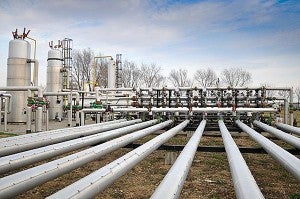This year is proving to be a big year for methane research. We’ve seen a handful of new studies published, some funded by EDF and some not, as well as new projects announced.
The attention methane is getting by the scientific community is justified and overdue. Methane emissions are a central issue in the debate over the role that natural gas may play in our national energy future. From a climate perspective, methane is 72 times more powerful than carbon dioxide (CO2) on a per ounce basis when released into the atmosphere over the first 20 years. And according to new projections by the Intergovernmental Panel on Climate Change (IPCC), methane is far more potent than we realized (as much as 84 to 87 times more potent than CO2 on a 20-year basis).
The oil and natural gas industry is the single largest source of manmade methane emissions in the United States. Despite this, little is known about how much methane is released from where across the natural gas supply chain. But, according to the Environmental Protection Agency’s latest estimates, we know enough to say that methane poses a serious problem to the climate.
Reducing methane emissions is critical. However, effectively doing so depends on our ability to pinpoint potential emission sources – a key driver behind EDF’s methane research series. This overall effort will result in roughly 16 different studies and involves more than 90 universities, scientists, research facilities and natural gas companies. The study announced this week is focused on gathering infrastructure and processing plants, and with this news, EDF now has helped catalyze different projects in all parts of the natural gas value chain, from the well-head to end users like local distribution companies and natural gas vehicles and fueling stations.
Dr. Anthony Marchese, Colorado State University (CSU) mechanical engineering professor and director of the CSU Engines and Energy Conversion Laboratory is leading this new study. CSU will begin collecting data this week from potential methane sources associated with natural gas midstream gathering and processing facilities with access to equipment and sites around the country provided by participating companies. Over the next six months, measurements will be made at more than 100 different sites in 12 states.
In addition to EDF, sponsors of the $1.9 million study include Access Midstream, Anadarko Petroleum Corp., Hess Corp., Southwestern Energy Co. and Williams Partners Operating LLC. DCP Midstream is also allowing the study team access to sites. The results of the CSU study, anticipated in mid-2014 and subject to publication in a scientific journal, will be linked to other studies already underway to help provide a clearer picture of system-wide methane emissions.
We are in the very early stages of this effort and there is much yet to learn –but momentum is building. I led part of a discussion yesterday at Colorado State’s 2013 Natural Gas Symposium with leaders from the energy industry, environmental community and government around natural gas issues, in which methane was a key topic discussed. It is also a topic currently on the mind of Colorado air quality rule makers.
Natural gas, done right, has climate advantages but only if we minimize methane to the lowest possible extent. From what we learned from the UT production study, announced several weeks ago, we know there are opportunities to achieve significant emission reductions. Now we just need to put the data we have to work. Urgent action is essential, even as we learn more. The condition of our immediate climate future depends on it.










